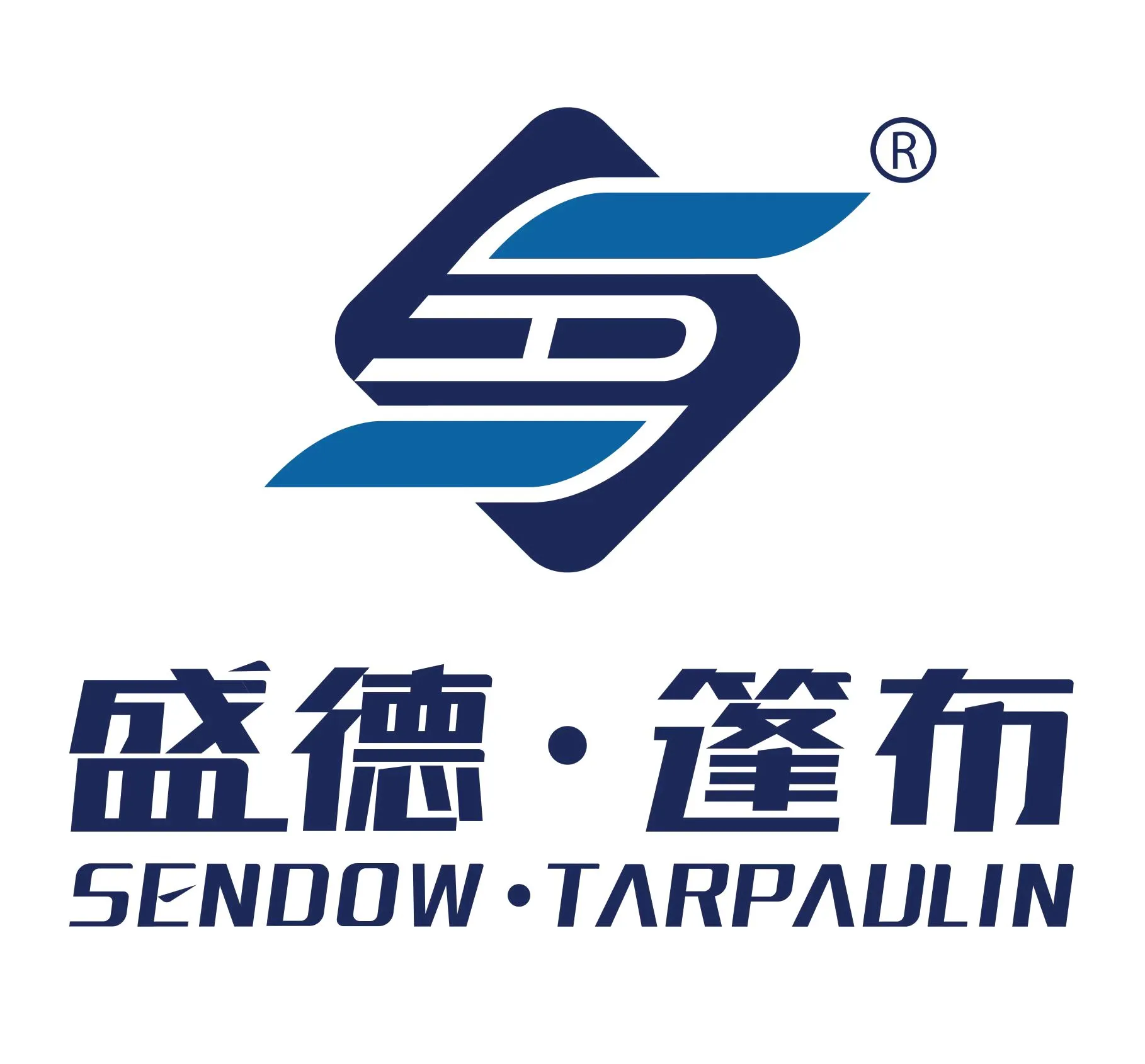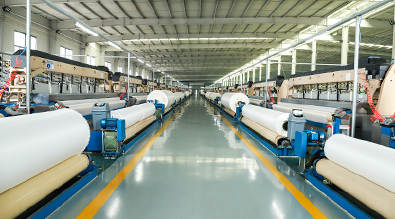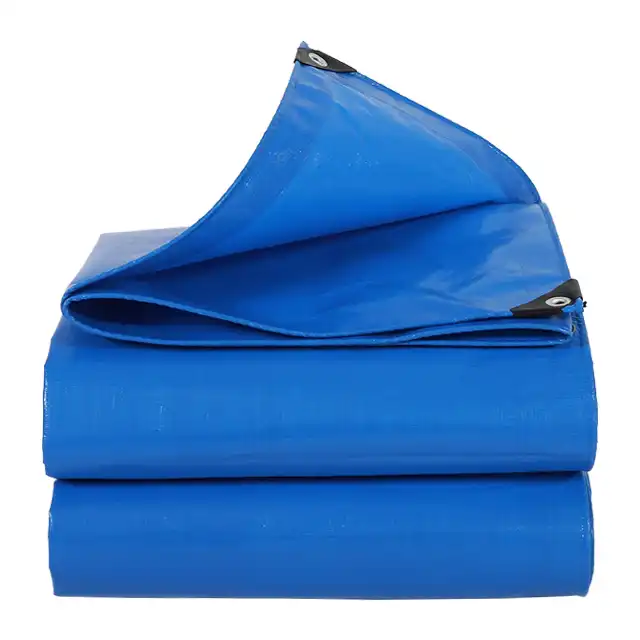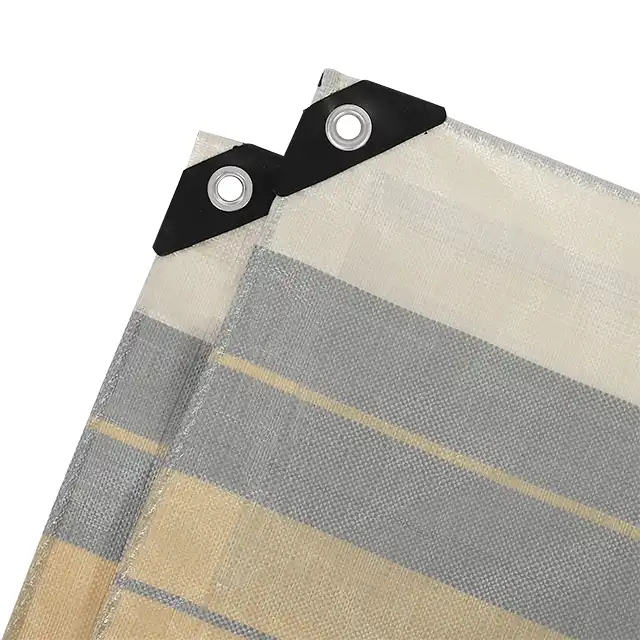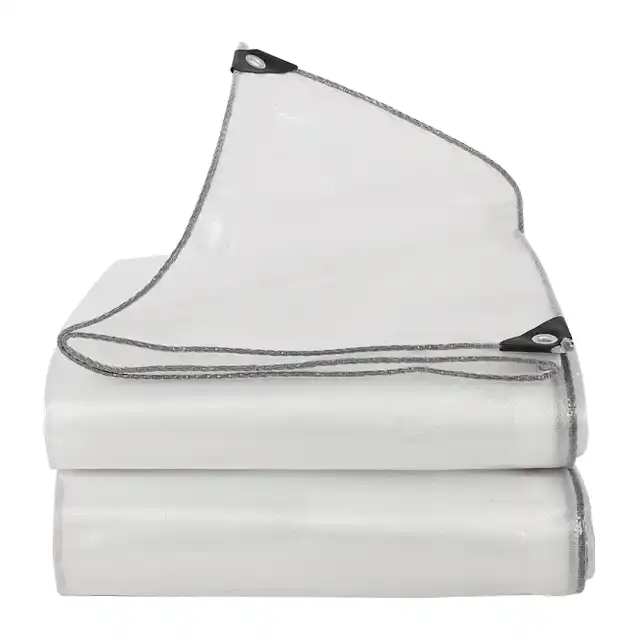Why UV Stabilized PE Woven Fabric Is a Smart Outdoor Solution?
In today's world where durability meets practicality, UV stabilized PE woven fabric stands out as an exceptional solution for outdoor applications. This innovative material has revolutionized how we approach protection against environmental elements while maintaining cost-effectiveness and versatility. PE woven fabric with UV stabilization represents a significant advancement in polyethylene technology, offering superior resistance to sunlight degradation that would typically break down standard materials. When seeking reliable protection for outdoor assets, agricultural applications, or construction projects, understanding why this particular solution outperforms alternatives becomes essential for making informed decisions about long-term investments in protective materials.
The Science Behind UV Stabilized PE Woven Fabric
Advanced Manufacturing Process
 The production of high-quality UV stabilized PE woven fabric involves a sophisticated manufacturing process that begins with high-density polyethylene (HDPE) granules. These premium materials undergo an extrusion process where they are melted and formed into thin strands or tapes. At Linyi Shengde Plastic Co., Ltd., this critical phase utilizes over 30 units of high-tech extruding machines capable of producing yarn thickness ranging from 400D to 2500D, ensuring precise material density for specific applications. The extruded tapes are then stretched to enhance tensile strength before entering the weaving phase. This careful process creates the foundation for pe woven fabric that maintains structural integrity even under harsh environmental conditions. The resulting base material already demonstrates impressive durability, but the addition of UV stabilizing compounds during production elevates its performance to exceptional levels for outdoor use.
The production of high-quality UV stabilized PE woven fabric involves a sophisticated manufacturing process that begins with high-density polyethylene (HDPE) granules. These premium materials undergo an extrusion process where they are melted and formed into thin strands or tapes. At Linyi Shengde Plastic Co., Ltd., this critical phase utilizes over 30 units of high-tech extruding machines capable of producing yarn thickness ranging from 400D to 2500D, ensuring precise material density for specific applications. The extruded tapes are then stretched to enhance tensile strength before entering the weaving phase. This careful process creates the foundation for pe woven fabric that maintains structural integrity even under harsh environmental conditions. The resulting base material already demonstrates impressive durability, but the addition of UV stabilizing compounds during production elevates its performance to exceptional levels for outdoor use.
UV Degradation Protection Mechanisms
The incorporation of specialized UV stabilizers into PE woven fabric creates a powerful defense mechanism against solar radiation. Standard polyethylene materials typically break down when exposed to ultraviolet rays, leading to brittleness, color fading, and structural failure. However, UV stabilized pe woven fabric contains carefully formulated additives that absorb harmful UV radiation and convert it into less damaging forms of energy, typically heat that dissipates without harming the polymer structure. Sendow Tarpaulin's manufacturing process incorporates UV treatment ranging from 1% to 7%, depending on the intended application and expected sun exposure. This treatment extends the material's lifespan by preventing photo-oxidation reactions that would otherwise lead to polymer chain breakdown. The result is a fabric that maintains its essential properties—flexibility, tensile strength, and water resistance—for significantly longer periods even when continuously exposed to harsh sunlight, making it ideal for long-term outdoor installations.
Material Composition Benefits
The unique composition of UV stabilized PE woven fabric provides multiple performance advantages beyond just sun protection. The base material consists of HDPE woven fabric with LDPE coating on both sides, creating a multilayer structure that excels in various environmental conditions. This composition delivers remarkable waterproofing capabilities while maintaining breathability where needed. The material's weight ranges from 65gsm to 280gsm, offering options from lightweight solutions to heavy-duty applications without compromising on performance. With mesh counts varying from 10x10 to 14x14, Sendow's pe woven fabric achieves an optimal balance between strength and weight. The thickness, ranging from 7 to 12 mil, provides appropriate durability for different applications while remaining easy to handle and deploy. This carefully engineered composition results in a material that remains flexible even in extreme cold (Arctic Flexibility feature), resists tearing under stress, and maintains dimensional stability when exposed to temperature fluctuations, making it truly versatile for diverse outdoor environments around the world.
Performance Advantages in Outdoor Applications
Weather Resistance Capabilities
UV stabilized PE woven fabric demonstrates exceptional performance against diverse weather conditions, setting it apart from conventional protective materials. Its 100% waterproof nature makes it an ideal solution for applications requiring complete moisture protection. When heavy rainfall occurs, water simply runs off the surface without penetration, thanks to the LDPE coating applied during manufacturing. This waterproofing capability remains effective even after years of outdoor exposure, unlike many alternative materials that deteriorate and lose their water resistance properties over time. Beyond rain protection, pe woven fabric exhibits remarkable resistance to extreme temperatures, maintaining flexibility and functionality from freezing conditions to intense heat. Sendow Tarpaulin's Arctic Flexibility feature ensures the material doesn't become brittle even in sub-zero environments, preventing cracking or tearing during winter applications. This comprehensive weather resistance makes it suitable for year-round outdoor use in diverse global climates, from arid desert regions to tropical environments with high humidity and rainfall, ensuring consistent performance regardless of seasonal changes.
Longevity and Cost-Effectiveness
The exceptional durability of UV stabilized PE woven fabric translates directly into outstanding cost-effectiveness for commercial and residential applications. While initial investment might slightly exceed that of non-stabilized alternatives, the extended service life delivers significantly lower cost-per-year of use. Sendow's high-quality pe woven fabric maintains its structural integrity and appearance for years, even under continuous outdoor exposure, eliminating the frequent replacement costs associated with inferior materials. This longevity stems from multiple quality control measures implemented at Linyi Shengde Plastic Co., Ltd., where four advanced coating machines and professional technicians meticulously monitor production standards. The company's ISO 9001:2015 certification further validates their commitment to manufacturing excellence. Beyond the direct material savings, users benefit from reduced labor costs for replacement installations and decreased downtime for protected equipment or spaces. The material's tear resistance and anti-corrosion properties further extend its functional lifespan, making it an economically sound choice for projects requiring dependable long-term protection against environmental elements while maintaining aesthetic appeal throughout its service life.
Versatility Across Industries
The remarkable adaptability of UV stabilized PE woven fabric has established it as an indispensable material across numerous industries and applications. In agriculture, this versatile pe woven fabric serves as greenhouse covering, providing optimal light transmission while protecting plants from excessive UV radiation and maintaining consistent growing conditions. For construction projects, it functions as effective debris containment, temporary roofing, or equipment protection during project phases. The transportation sector relies on this material for durable truck covers that withstand thousands of miles of sun exposure while protecting cargo from moisture and contaminants. Recreational applications include camping tents, picnic pads, and outdoor event shelters that benefit from the material's lightweight nature combined with excellent weather protection. In aquaculture, impermeable tarps create controlled environments for fish farming operations. Sendow Tarpaulin offers customization options for specific industry requirements, with colors ranging across the spectrum to meet aesthetic and functional needs. The material's shrink-proof nature ensures dimensional stability in applications requiring precise fitting, while its easy handling characteristics make it suitable for both large commercial installations and smaller DIY projects, demonstrating truly exceptional versatility across virtually any outdoor application scenario.
Environmental Considerations and Innovations
Sustainability Factors
The environmental profile of UV stabilized PE woven fabric presents several meaningful sustainability advantages compared to alternative materials. Production processes at Linyi Shengde Plastic Co., Ltd. emphasize resource efficiency, utilizing advanced manufacturing technology that minimizes waste generation and energy consumption. The inherent durability of pe woven fabric contributes significantly to sustainability by reducing the frequency of replacement and associated resource consumption. While traditional protective materials might require replacement every season or year, quality UV stabilized polyethylene products can remain functional for multiple years, substantially decreasing the overall environmental footprint of protective solutions. The material's lightweight nature also reduces transportation-related carbon emissions compared to heavier alternatives like rubber or PVC sheets. Additionally, modern PE formulations have improved recyclability characteristics, allowing for potential material recovery at end-of-life rather than landfill disposal. Sendow's commitment to environmental responsibility extends to their manufacturing facilities, where ongoing efforts focus on reducing water usage and implementing energy conservation measures throughout production processes. These sustainability factors make UV stabilized PE woven fabric an increasingly attractive option for environmentally conscious consumers and businesses seeking to reduce their ecological impact while maintaining high performance standards for outdoor protection requirements.
Recent Technological Advancements
The field of UV stabilized PE woven fabric has witnessed remarkable technological progress in recent years, with Sendow Tarpaulin at the forefront of these innovations. Research and development efforts have yielded significant improvements in UV stabilizer formulations, extending material lifespan even in regions with extreme solar exposure. Advanced weaving technologies, including the implementation of unique 5m and 4m width fabric weaving machines, have eliminated the need for joints in large installations, significantly enhancing overall structural integrity and appearance. The company's development of ultra-wide width braiding machines represents a substantial technological breakthrough, enabling the production of pe woven fabric with unprecedented dimensional specifications. Fire-resistant formulations have expanded the material's application potential to scenarios with more stringent safety requirements, while enhanced waterproofing technologies have improved performance in continuously wet environments. Coating technology innovations have increased adhesion between layers, preventing delamination issues that affected earlier generations of laminated polyethylene products. These ongoing technological advancements continue to expand the performance envelope of UV stabilized materials, making them suitable for increasingly demanding applications while maintaining competitive price points compared to specialty fabrics or synthetic rubber alternatives.
Customization Possibilities
The inherent adaptability of UV stabilized PE woven fabric creates exceptional opportunities for customization across diverse application requirements. Linyi Shengde Plastic Co., Ltd. offers extensive customization options beginning with material weight, ranging from lightweight 65gsm solutions to heavy-duty 280gsm products for demanding environments. Dimensional customization represents another significant advantage, with Sendow's advanced manufacturing capabilities enabling production of pe woven fabric in precise specifications up to 5.1 meters in width without joints, eliminating weak points in large installations. Color customization extends beyond aesthetics to functional considerations, with specialized pigments offering varying degrees of light reflection or heat absorption properties depending on specific application needs. UV protection levels can be tailored between 1% and 7% based on expected sun exposure duration and intensity. The company's strong R&D capabilities facilitate customized development of specialized properties like enhanced fire resistance, additional chemical resistance, or modified surface textures for specific grip requirements. Logo printing options allow for brand visibility on installed materials, particularly valuable for commercial applications or event structures. This extensive customization capability enables precise matching of material properties to application requirements, ensuring optimal performance while avoiding unnecessary costs associated with over-specified generic solutions, truly making UV stabilized PE woven fabric an adaptable solution for virtually any outdoor protection scenario.
Conclusion
UV stabilized PE woven fabric stands as the intelligent choice for outdoor solutions, offering unmatched durability, versatility, and cost-effectiveness. Its scientific formulation provides superior protection against harsh elements while maintaining flexibility and strength over extended periods. Whether for commercial, agricultural, or residential applications, this innovative material delivers reliable performance across diverse environmental conditions, making it the preferred solution for discerning professionals worldwide.
At Linyi Shengde Plastic Co., Ltd., we've spent over 20 years perfecting our PE woven fabric technology. Our commitment to quality, backed by ISO 9001:2015 certification and advanced testing facilities, ensures you receive products that exceed expectations. Our R&D team continuously innovates to enhance product performance and customize solutions for your specific needs. Ready to experience the difference quality makes? Contact our team today at info@shengdetarp.com to discuss how our UV stabilized PE woven fabric can solve your outdoor protection challenges.
References
1. Johnson, M.R. & Thompson, K.L. (2023). Advancements in UV Stabilization Technologies for Polyethylene Materials. Journal of Polymer Science, 45(3), 217-229.
2. Zhang, H., Li, X., & Wang, C. (2022). Comparative Analysis of Weathering Resistance in Modern Tarpaulin Materials. Materials Science and Engineering, 18(2), 145-158.
3. Patterson, S.D. & Garcia, R.M. (2023). Environmental Impact Assessment of Polyethylene Fabrics in Outdoor Applications. Sustainable Materials Review, 14(4), 312-325.
4. Chen, Y., Wang, T., & Liu, J. (2024). Longevity Studies of UV-Treated Polyethylene Products in Extreme Weather Conditions. Industrial Materials Journal, 29(1), 78-91.
5. Roberts, A.J. & Patel, V.K. (2023). Cost-Benefit Analysis of High-Performance Fabrics in Agricultural Applications. Agricultural Engineering International, 32(3), 229-241.
6. Yamamoto, K., Singh, A., & Ahmed, F. (2024). Global Market Trends in Weatherproof Synthetic Fabrics: A Five-Year Forecast. International Journal of Textile Research, 17(2), 156-169.
